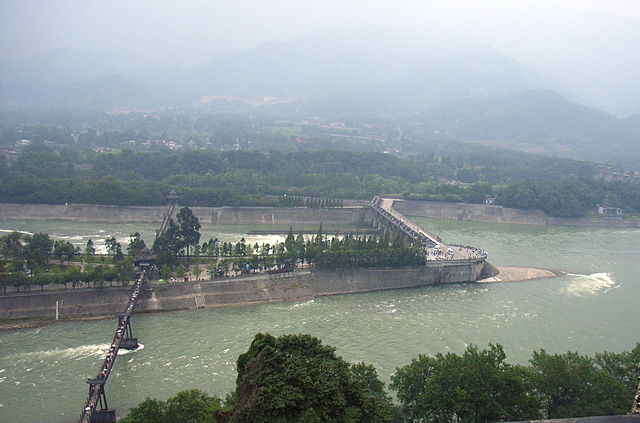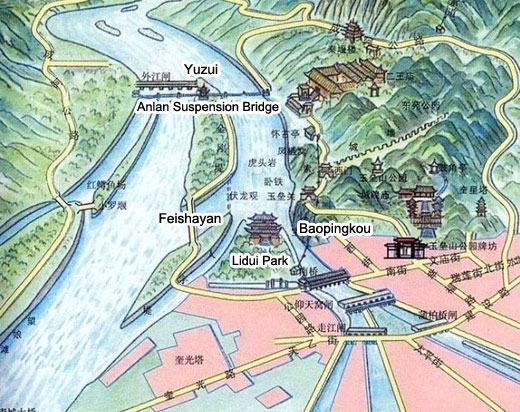
Sichuan’s Min River is the largest and longest of the Yangtze tributaries: it flows 735 km before it joins the mighty Yangtze at Yibin. (Photo: Wikimedia)
by David Parmer
These days a whole series of dams are being built along the Min River to feed China’s incessant hunger for power, to prevent floods and to provide irrigation for agriculture. But long before these dams were even a dream, there was one engineering project that has stood the test of time and still serves the people of Sichuan, and that is the Dujiangyan Irrigation System.
The Dujiangyan Irrigation System is the oldest no-dam irrigation system in the world. It was built during the Qin dynasty in 256BC by the provincial governor and engineer whose name has come down to us through history: Li Bing. Governor Li saw the dangers of flooding and the need for irrigation and began to plan an ingenious three-part irrigation system to tame the waters and provide the needed flow for irrigation. The tunnel through Mt. Yulei to the Sichuan plain took eight years to complete. Li Bing’s engineering feat not only prevented floods but also greatly contributed to the long term prosperity of the region.
In 2000, the Dujiangyan Irrigation System and adjacent Taoist sites on Mount Qingcheng were declared UNESCO World Heritage sites. Dujiangyan and Mt. Qingcheng are about 60km northwest of Chegndu and accessible by train and bus.
(Illustration: China Discovery)
UNESCO World Heritage Site
 日本語
日本語 English
English 中国語
中国語